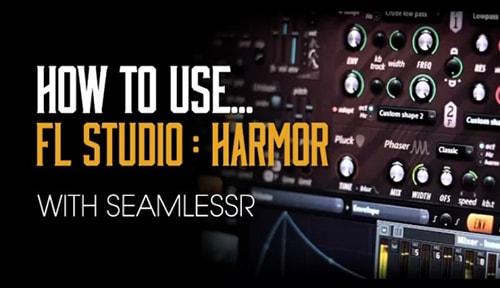

Resynthesis or image-synthesis, Harmor features both. Processing being multi-threaded, extra CPU cores come in handy. Voices may be generating hundreds of harmonics in parallel and still not overload the CPU. Its efficency is in fact, comparable to that of subtractive synthesizers. Resynthesis can of course be tweaked, providing time stretching, pitch shifting, or less conventional manipulations of partials.And of course, the result of the analysis can still be turned into an image for further editing.Īdditive synthesis is generally very CPU-consuming, but not Harmor's engine.

The reproduction will be faithful, not a vague sound-alike as in many additive synthesizers. Get access to gain & pitch planes which you can tweak in the image editor of your choice, and import any bitmap, even if it wasn't designed to be turned into audio, it might still sound interesting.īeing an additive synthesizer, Harmor can resynthesize audio files as well. No human can (or even wants to) edit 500 envelopes, but editing 2D images, that we can do easily. If you need one of the 2 filter units processed after the blur unit, that's no problem.īecause it typically requires manipulating large amounts (up to 500 per voice) of partials over time, additive synthesis is hard to handle. Through the same envelope/mappings, randomize any parameter or link it to key or velocity, and even fine-tune each unison voice independently.Processing units can be rearranged in a semi-modular way. You wanted more, so also featured is the multipoint envelope editor of Sytrus fame, applied to over 40 parameters, in 2 independent parts. You don't just select filter types, you draw them. Its modules will look familiar to subtractive synthesizer enthusiasts: oscillators, filters & phasers, these are featured in Harmor but, because performed through additive synthesis, offer more freedom. Just like its little brother Harmless, Harmor is driven by a powerful additive synthesis engine. Introducing a powerful additive / subtractive synthesizer, image synthesizer as well as audio resynthesizer, Harmor.
FL STUDIO HARMOR DISCOUNT SOFTWARE
I'm a bit bias because I really like Image Line plug-ins, and all of the plugins all together is are more expensive than buying them individually, if you like the plugins when you use them, I'd so go for it.Note - This software is Windows compatible only and will not function on Mac computers!

I like making juicy bass lines with it, and I don't really use the heavy acid sound, clean basses just sound really nice with it. Transitior Bass is cool too, and since it's a 303 emulator you know what kind of sounds to expect from it, so if you're into that sound go ahead.

You can definitely hear the difference if you use drum break loops. My drums tend to have a bit of a hard transient and TP seems to tame them pretty good. It's really just a compressor but you can definitely tell the difference when you start using it on drums. I like to use the drum sequencer to make my own breaks and just for easy drum loops and percussive ghost hits.
FL STUDIO HARMOR DISCOUNT FREE
Give Drum Pad a try in FL, it's free and it's the same thing as Drumaxx but you can only make one drum at a time, the controls are all the same. Drumaxx is a drum sequencer and ability to make your own drums. Sakura is good for trying to replicate physical instruments, it goes a little bit over my head but I like the sound of it, they can be a bit abrasive at times. PoiZone and Sawer supposed to be like analog synths, so the controls are a little bit limiting but I think they sound great. I don't really care about FM too much but Toxic Biohazard is cool, and I do want to learn Morphine, it'll probably be the hardest synth to learn for me but I love what it's capable off. I've been trying out PoiZone, Sawer, Sakura, Transient Processor, and Drumaxx and I actually really like them. I also had Signature and bought Harmor separately. I recommend giving the plugins a try at least.


 0 kommentar(er)
0 kommentar(er)
